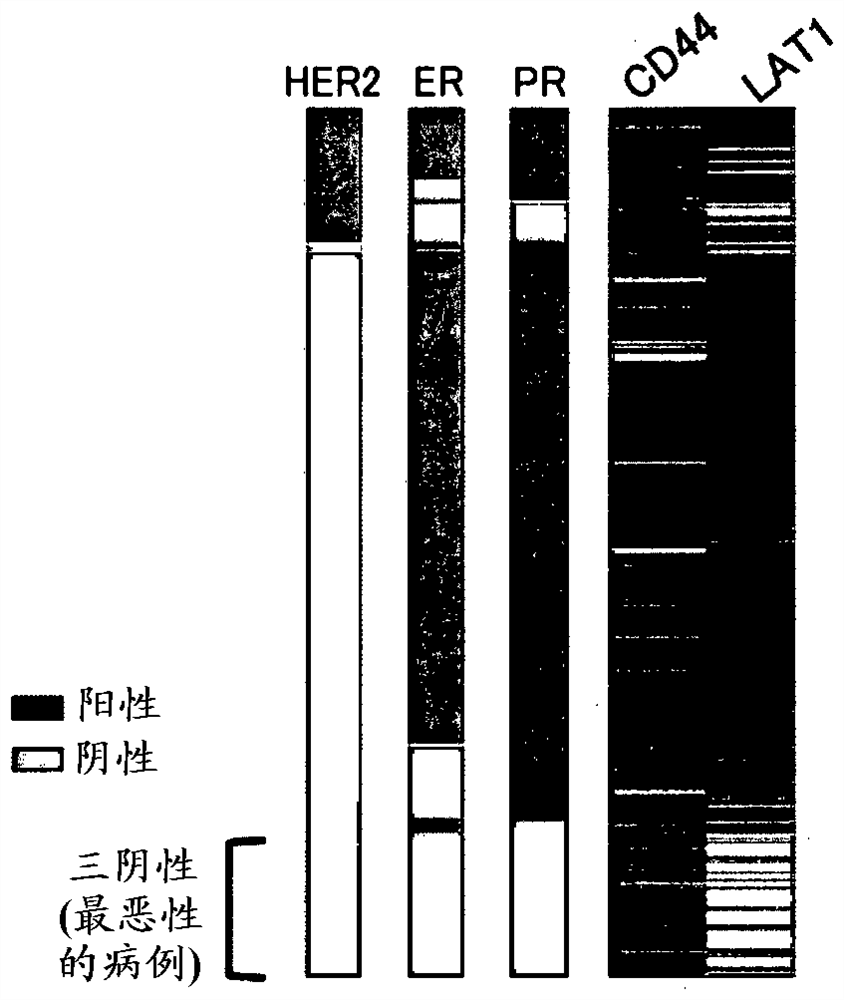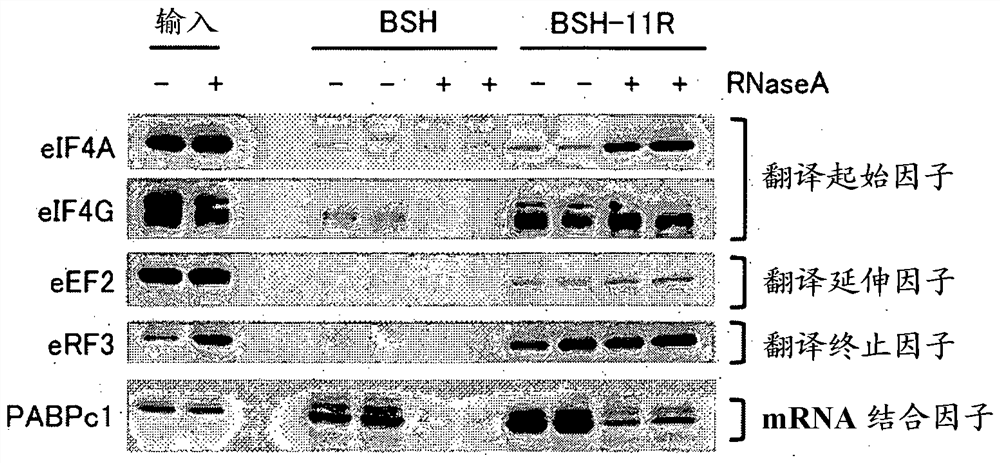Cancer lesion tissue evaluation for optimizing effect of boron neutron capture therapy
A technology for cancer cells and related factors, which is applied to the active components of boron compounds, biochemical equipment and methods, and disease diagnosis. It can solve problems such as high cost, no effective means found, and limited reagent prices, so as to reduce failure and realize individualization Effects of Medicine, Expansion Potential
- Summary
- Abstract
- Description
- Claims
- Application Information
AI Technical Summary
Problems solved by technology
Method used
Image
Examples
Embodiment 1
[0120] Example 1. Uptake of BSH to which a peptide containing a basic amino acid residue is covalently linked, and a complex comprising a peptide containing a basic amino acid residue and BSH, into CD44-expressing and CD44-knockdown cancer cells
[0121]To examine BSH to which a peptide consisting of three arginines was covalently linked (termed BSH-3R), to which a peptide consisting of undecyl-arginines was covalently linked (termed BSH-11R), and The relationship between the intracellular uptake of a complex containing Ala-Ala-Ala-Ala-Ala-Ala-Lys and BSH (termed BSH / A6K) and CD44 expression, first introduced CD44-shRNA lentivirus into The malignant brain tumor cell line U87MG was used to generate CD44 knockdown cell sublines. Knockdown efficiency was confirmed by Western blotting with an anti-CD44 antibody (manufactured by Cell Signaling Technology, Inc.). Then, in order to verify the correlation of the introduction efficiency of BSH-11R and BSH / A6K with the expression level...
Embodiment 2
[0124] Example 2. BSH targeting translation-related factors via covalently linked peptides containing basic amino acid residues
[0125] Simple BSH (referred to as BSH) (50 μM) or BSH-11R (50 μM) was added to the cell disruption solution of the malignant brain tumor cell line U251, and by immunoprecipitation with an anti-BSH antibody (10 μg), the Proteins that bind BSH and BSH-11R.
[0126] The results are shown in figure 2 middle. Since more translation-related factors co-precipitated with BSH-11R compared with BSH, the peptide portion (11R) of BSH-11R was found to be essential for binding to translation-related factors. It was also found that there are mRNA-independent binding modes and mRNA-dependent binding modes according to translation-related factors.
[0127] To examine whether the binding of BSH-11R to translation-related factors is direct or indirect, a subline of the malignant brain tumor cell line U251, which underwent knockdown of translation-related factors w...
Embodiment 3
[0130] Example 3. BNCT using BSH to which a peptide containing basic amino acid residues is covalently linked
[0131] Based on the binding of BSH-11R to translation-related factors, it is thought that the translation machinery can be selectively targeted. Therefore, it was decided to perform BNCT using BSH-11R. The malignant brain tumor cell line U87ΔEGFR was pretreated with 100 μM BSH-11R (24 hours before irradiation). Cells were detached with trypsin on the day of irradiation at 1 x 10 6 Amounts of cells / mL were dispensed into tubes and irradiated with neutron radiation using an accelerator (at the National Institute of Radiological Sciences). Irradiation times were 0, 15, 45, and 60 minutes, and each base Gy (Gray) was estimated and calculated to be less than or equal to 1 Gy.
[0132] The irradiated cells were recovered, RNA extraction was performed, and then an equal amount of RNA (1000 ng) was used as a template to generate cDNA, and quantitative PCR was performed. ...
PUM
 Login to View More
Login to View More Abstract
Description
Claims
Application Information
 Login to View More
Login to View More - R&D
- Intellectual Property
- Life Sciences
- Materials
- Tech Scout
- Unparalleled Data Quality
- Higher Quality Content
- 60% Fewer Hallucinations
Browse by: Latest US Patents, China's latest patents, Technical Efficacy Thesaurus, Application Domain, Technology Topic, Popular Technical Reports.
© 2025 PatSnap. All rights reserved.Legal|Privacy policy|Modern Slavery Act Transparency Statement|Sitemap|About US| Contact US: help@patsnap.com



